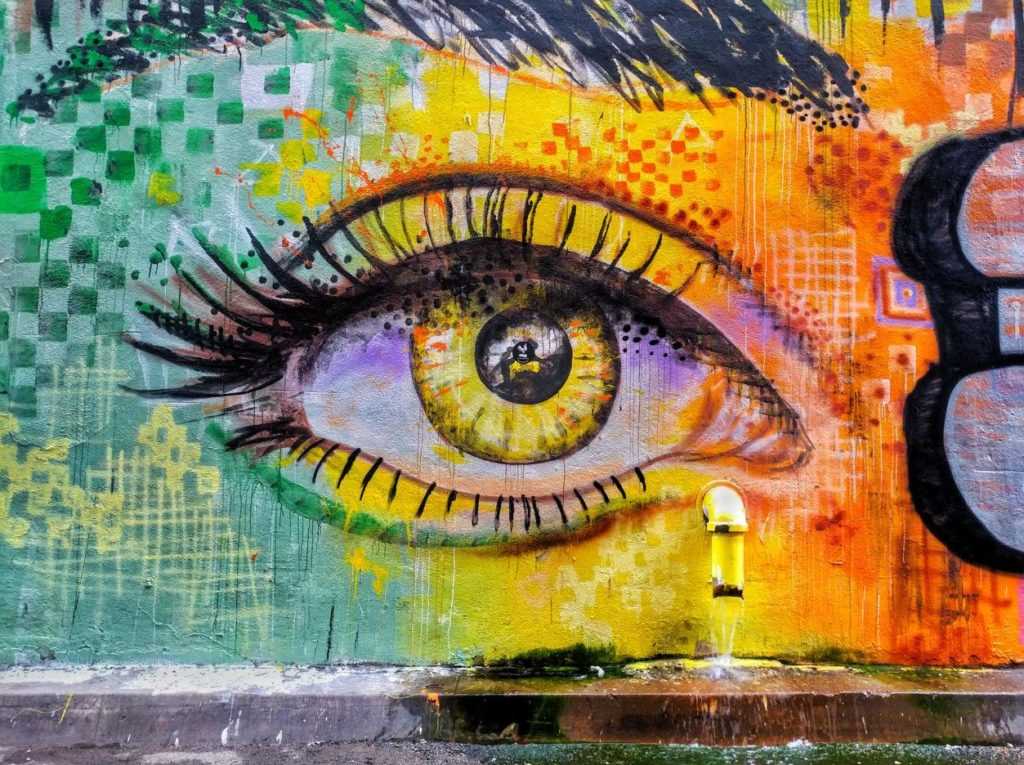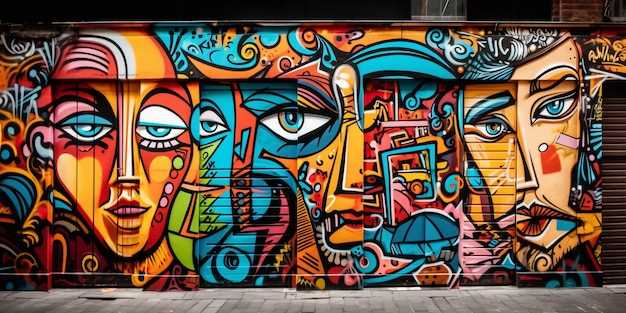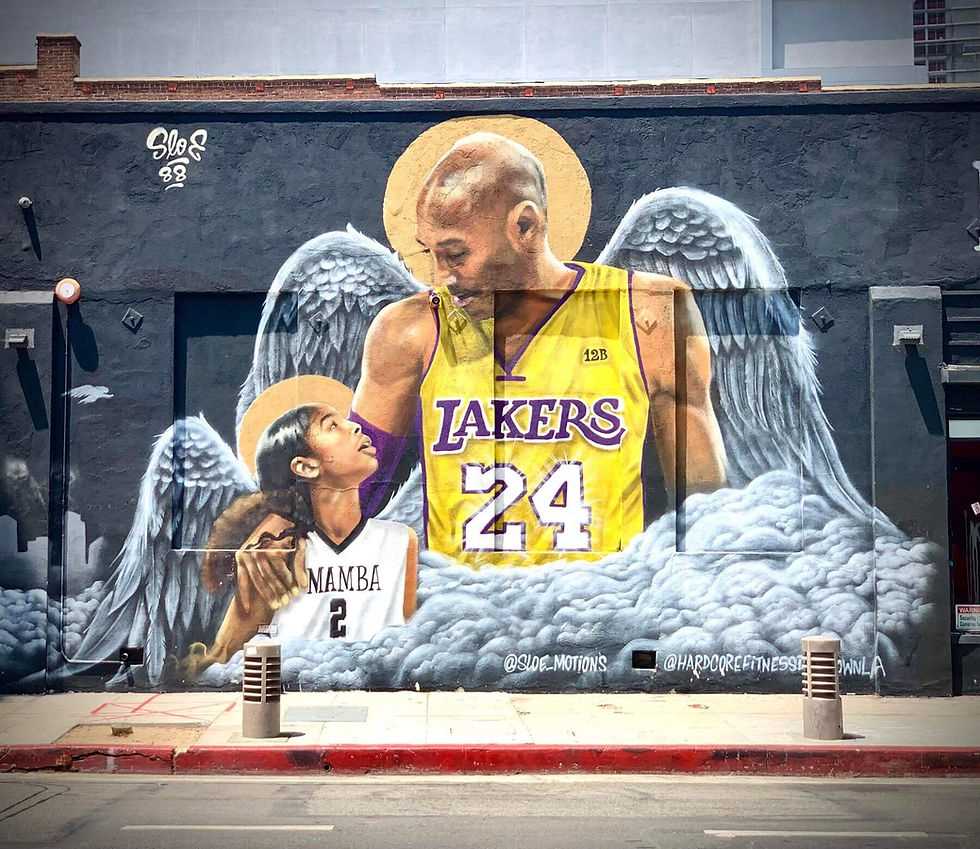
Graffiti has always been a highly debated form of art, often viewed as vandalism or a sign of urban decay. However, beneath the surface of these controversial images lies a world of artistic expression and creativity that cannot be ignored.
Contrary to popular belief, graffiti is not just a random act of defacement. It is a thoughtful and intentional form of art that gives a voice to the marginalized and unheard. Often created in the dead of night, these unique murals and tags are a symbol of rebellion and a way to reclaim public spaces.
What sets graffiti apart from other art forms is its ephemeral nature. Unlike paintings in galleries or sculptures in museums, graffiti is ever-changing and transient. It exists for a brief moment before it is painted over or washed away, leaving only a memory behind.
From the bold and colorful masterpieces that cover entire walls to the small and intricate stencils tucked away in hidden corners, graffiti artists bring life and vibrancy to the concrete jungle. They use abandoned buildings, train cars, and back alleys as their canvas, turning the ordinary into something extraordinary.
Section 2: The Essence of Street Art
Street art has evolved into a dynamic reflection of urban culture, with its essence deeply rooted in creativity, expression, and rebellion.
The Power of Creativity

Street art serves as a canvas for artists to unleash their imagination and transform ordinary city spaces into captivating works of art. By utilizing various techniques such as stenciling, spraying, and freehand drawing, street artists can create unique and intricate designs that captivate the viewers’ attention.
The Expression of Urban Life

Street art is a powerful means for individuals to express their thoughts, ideas, and experiences. From political statements to social commentaries, street artists use their creativity to communicate messages that resonate with the local community. Through their art, they offer a visual narrative of the urban life and its challenges, hopes, and dreams.
Street art: A Catalyst for Change
Street art has often been associated with rebellion and counterculture movements. Artists use this art form as a form of protest, challenging societal norms and provoking discussions on important topics. By transforming public spaces into galleries, street art invites viewers to question the status quo and reconsider their perspectives.
Overall, street art embodies the essence of urban creativity, serving as a visual representation of the diverse and vibrant cultures found within our cities.
Section 3: Exploring Urban Canvas

One of the most popular locations for graffiti art is city streets. These public spaces allow artists to share their messages and artistic visions with a wider audience. The graffiti found on city streets can range from simple tags to intricate murals that cover entire buildings. Each piece adds to the visual tapestry of the urban environment and gives a voice to the artistic community.
Abandoned Spaces

Abandoned spaces provide a blank canvas for graffiti artists to leave their mark. From derelict buildings to forgotten subway tunnels, these spaces are transformed into vibrant works of art. The contrast between the decay of the abandoned structures and the colorful graffiti creates a striking visual impact.
Graffiti in abandoned spaces often explores themes of urban decay, social commentary, and personal expression. These artworks can range from small tags to large-scale murals that cover entire walls. The artists who create these pieces use the urban canvas as a way to reclaim and redefine their environment.
Transportation as Art

Another canvas for graffiti art is transportation. Train cars, buses, and even bicycles serve as a movable gallery for artists to showcase their work. These mobile canvases allow artists to reach a wider audience as their art travels through the city.
Graffiti on transportation often features bold colors and designs, grabbing the attention of passersby. These artworks can be seen as a form of public art, adding a touch of creativity and vibrancy to otherwise dull and utilitarian vehicles. Transportation graffiti blurs the line between art and everyday life, turning the urban landscape into an ever-changing gallery.
- City streets provide a public space for graffiti art.
- Abandoned spaces offer artists a blank canvas.
- Transportation serves as a movable gallery.
Exploring the urban canvas allows these artists to push the boundaries of what is considered traditional art. Graffiti becomes a way to bring creativity and expression to the streets, adding color and personality to the urban landscape.
Section 4: Colors That Speak

When it comes to graffiti, one of the most striking aspects is the vibrant and bold use of colors. Graffiti artists have mastered the art of creating visually stunning pieces that speak to their audience through the use of colors.
The Power of Contrast

Contrast plays a significant role in graffiti, as artists strategically choose colors that create maximum impact. The contrast between bright, eye-catching hues and darker shades helps to bring the artwork to life and make it truly stand out. The juxtaposition of colors can evoke emotion and grab the attention of passersby.
Mood and Expression

The choice of colors in graffiti also conveys the mood and expression of the artist. Bright and vibrant colors, such as yellows and pinks, can evoke feelings of joy and excitement. On the other hand, darker and more subdued colors, like blues and purples, can create a sense of mystery or sadness. Each artist’s color palette reflects their unique style and message.
Graffiti is a visual language that speaks to the urban environment. Through the use of colors, graffiti artists are able to express their creativity and emotions, as well as communicate with their audience in a powerful and unique way.
Section 5: Uniqueness in Every Stroke

One of the most captivating aspects of graffiti art is the uniqueness that is present in every stroke. Every graffiti artist brings their own individual style and approach to the craft, resulting in truly one-of-a-kind pieces.
Each stroke of the spray can is like a signature, with no two pieces being exactly alike. The use of vibrant colors, intricate designs, and bold lettering all contribute to the distinctiveness of graffiti art.
A Personal Touch

Every graffiti artist has their own personal touch that sets their work apart from others. It could be a signature symbol or technique that they incorporate into their pieces. This personal touch adds a sense of identity to the artwork, allowing the artist to leave their mark on the urban landscape.
Whether it’s the use of intricate stencils, detailed characters, or abstract shapes, each artist brings their own creative flair to the art form. This uniqueness is what makes graffiti art stand out and continue to captivate audiences around the world.
An Ever-Changing Canvas

Graffiti art is also unique in that it is constantly evolving and changing. Walls and surfaces that were once covered in vibrant artwork can quickly be transformed by new pieces. This ever-changing canvas creates a sense of excitement and anticipation, as you never know what new artistic expression you will encounter.
| Uniqueness in Every Stroke |
|---|
| Graffiti artists bring their own individual style and approach to the craft |
| Every stroke of the spray can is like a signature, with no two pieces being exactly alike |
| Use of vibrant colors, intricate designs, and bold lettering contribute to the distinctiveness |
| Personal touch adds a sense of identity to the artwork |
| Graffiti art is constantly evolving and changing |
Section 6: Pushing Boundaries and Challenging Norms

Redefining Artistic Expression

Through graffiti, artists have the opportunity to redefine artistic expression and break free from the constraints of galleries and museums. By taking their work to the streets, they can reach a wider audience and make their voices heard in unconventional ways.
Graffiti challenges the notion that art belongs only in designated spaces, instead asserting that artistic expression can manifest anywhere and everywhere. By defying traditional art forms, graffiti pushes the boundaries of what is considered acceptable and conventional.
Subverting the Status Quo

Moreover, graffiti has the power to subvert the status quo and challenge existing power structures. It often targets institutions, political figures, and social norms, aiming to provoke thought and inspire change.
By defacing walls and public spaces, graffiti artists challenge the authority that tries to control cities and urban environments. They reclaim these spaces, making them a canvas for their creative expression and sending powerful messages of dissent and resistance.
Ultimately, graffiti serves as a reminder that artistic expression is not confined to traditional mediums or controlled spaces. It’s a testament to the power of creativity to challenge norms, provoke thought, and inspire change in the urban landscape.

I am a mural enthusiast and a fervent admirer of street art. Rather than creating murals myself, I am passionate about collecting them. My love for street art knows no bounds. I am dedicated to curating and cherishing these artworks that grace the streets. My collection stands as a testament to my profound appreciation for this form of artistic expression.
read about me



